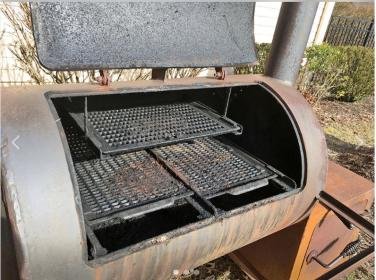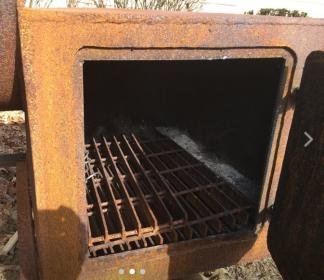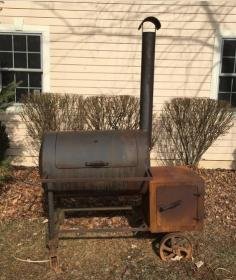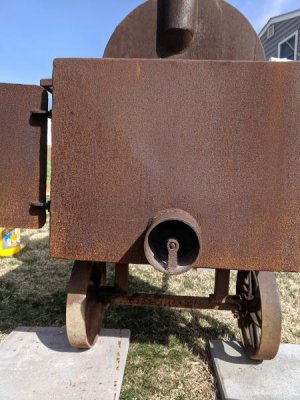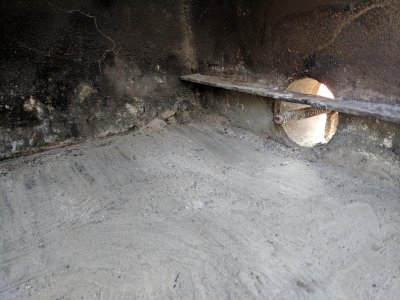I have been on the sidelines a while doing my homework and dreaming of the day I could have a house and a yard to get a nice smoker. Tomorrow is the day this happens! I am going to pick up a Reverse flow Offset stick burner. It looks like it has some superficial exterior rust, but nothing structural. I was thinking of doing a full cleaning of it to remove all seasoning/rust to get myself off to a fresh start as well as to allow me to modify the unit to suite my needs. Things I feel need to be addressed, besides the cleaning. I do have the ability to weld/fabricate. Any suggestions to what I have already listed or things I have missed would be GREATLY appreciated as I cannot wait to start this project.
1. Firebox looks to not have an air vent visible. Install sliding vent if needed
2. Install some sort of adjustable throttle for the exhaust
3. Enhance the rack space to utilize the entire chamber (unsure what type of metal to use here as I have read a few things)
4. DripTray/Deflector Plate - Depending on what is there I was hoping to have this angled with a channel /general inward angle to allow for drippings to drain and also have a pipe/ballvalve installed to allow for draining of fat that is below chamber. (Any opinions on having the tray edges raised to allow for water retention here and have this be a water pan option as well)
5. Fire Elevation in Firebox - Firebox may need some love to have the grates raised in the box.
6. Have better wheels/redo mobility situation. - Unsure what to do about this entirely.
7. Paint with high temp paint - Unsure what type of paint to use
8. Temperature probe Port - Add an opening to pass through temperature probes
9. Add table /workspace on the front and side (Temp probe holder)
1. Firebox looks to not have an air vent visible. Install sliding vent if needed
2. Install some sort of adjustable throttle for the exhaust
3. Enhance the rack space to utilize the entire chamber (unsure what type of metal to use here as I have read a few things)
4. DripTray/Deflector Plate - Depending on what is there I was hoping to have this angled with a channel /general inward angle to allow for drippings to drain and also have a pipe/ballvalve installed to allow for draining of fat that is below chamber. (Any opinions on having the tray edges raised to allow for water retention here and have this be a water pan option as well)
5. Fire Elevation in Firebox - Firebox may need some love to have the grates raised in the box.
6. Have better wheels/redo mobility situation. - Unsure what to do about this entirely.
7. Paint with high temp paint - Unsure what type of paint to use
8. Temperature probe Port - Add an opening to pass through temperature probes
9. Add table /workspace on the front and side (Temp probe holder)

